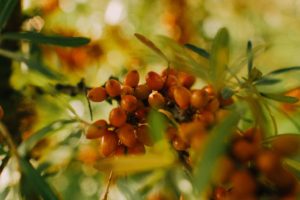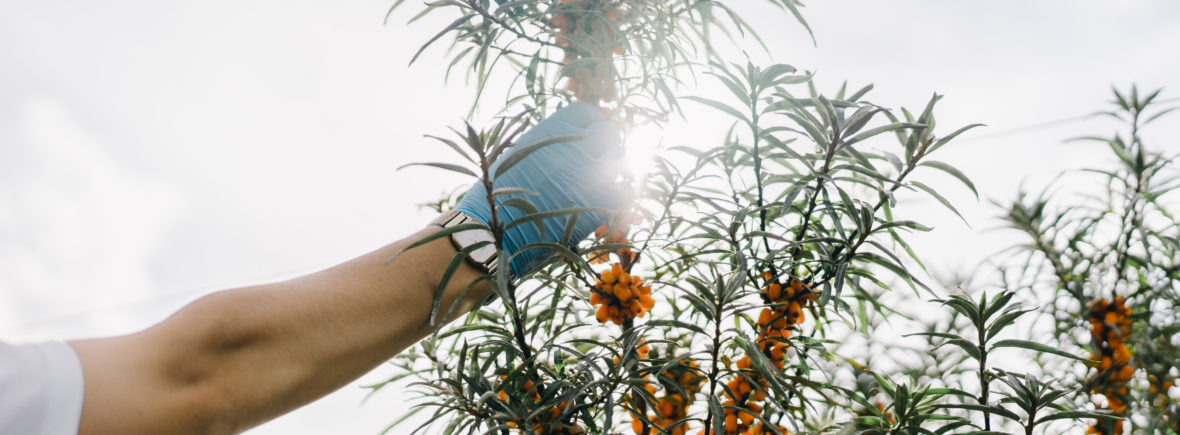 The plant
The plant
Sea buckthorn grows wild in the UK, across northern Europe and Scandinavia, Russia, China and the Himalayan region. It can grow in extreme climates and difficult soils, adapting to each environment. Near the Arctic the plants are dwarf, in Tibet and the mountainous regions of Nepal they grow up to 40ft as small trees. The fruit appears as a berry, which is normally orange, although this varies from red through to yellow depending on the amount of carotenoid pigment in the fruit. Berries weigh up to one gram each, about the size of a small red currant.
190 different nutrients
In the wild a plant may produce up to a few kilos of fruit, but because wild sea buckthorn is very thorny they are difficult to pick (the sea buckthorn we grow on our farm is (thankfully!) thornless). Even though these thorns make the fruit difficult to harvest, the berries have been recognised for centuries across northern Europe and Asia as having a health benefit. Modern analysis of sea buckthorn berries indicates 190 different nutrients. The concentration of these is often very high when plants grow in extreme conditions – such as 5500m up in the Himalayas or when growing in arid cold deserts. These plant chemicals are often seen as the reason why sea buckthorn can survive in extreme temperatures of below -30 deg C in winter, and 40 deg C in summer.
A synergy of multiple nutrients working together
These natural chemicals appear as vitamins ( A, B, C, E ); essential fatty acids ( omega 3,6,9 ) along with omega 7, which as a plant only appears in sea buckthorn and macadamia. Vitamin C is often the headline nutrient described in sea buckthorn, found in European varieties as being at levels of between 50 – 130 mg/100g, and much higher levels in wild plants in India. Vitamin C, also known as ascorbic acid, is one of a number of nutrients that will contribute to the natural anti-microbial nature of sea buckthorn and provide a sour taste to the berry. Other more specialist nutrients include plant sterols; a wide range of polyphenols including flavonoids; betain ; folate and carotenoids including B-carotene. The benefits attributed to sea buckthorn are often not the result of any one particular nutrient but the synergy of multiple nutrients interacting together.
For more information on sea buckthorn visit the UK Sea Buckthorn Association website.

